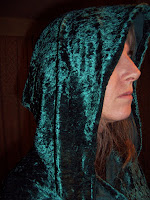Fleur-de-lis is French for lily.
This enduring symbol has had many uses through the
centuries. Of course, the most recognizable is the French monarchy who used the
symbol within their heraldry. The heraldry helped families with their claims
for the throne. French scholars date the use of the fleur to the 12th
century, first used by Louis VI.
However, scholars date the use of the fleur-de-lis back to Charlemagne as a religious symbol. The Catholic Church acknowledges use
of the fleur-de-lis as a symbol of the Trinity with the three petals
representing the all-in-one nature of God the Father, God the Son and God the
Holy Ghost.
Medieval art work of religious icons often used symbols to
identify the various patron saints depicted for the illiterate public. The
fleur-de-lis in the hand or at the feet of a woman identified her as the Virgin
Mary.
The petals of the lily became a representation of the traits:
faith, wisdom and chivalry which represented divine favor. The relation to
chivalry led the contemporary organization, the Boys Scouts to adopt the symbol as their own.
Today the remnants of the reach and power French monarchy is
found included in familial coat-of-arms of their descendants. Descendants share
their heritage by flying the fleur-de-list around the world in the English
coat-of-arms, the flag of Quebec, the fleur-de-lis of Florence, flag of Bosnia and
Herzegovina, and flag of New Orleans among others.
For more information about the fleur-de-lis go to: http://en.wikipedia.org/wiki/French_heraldry



